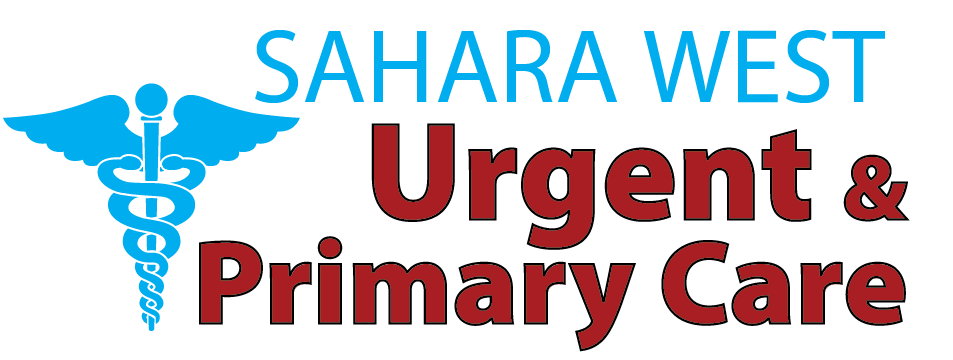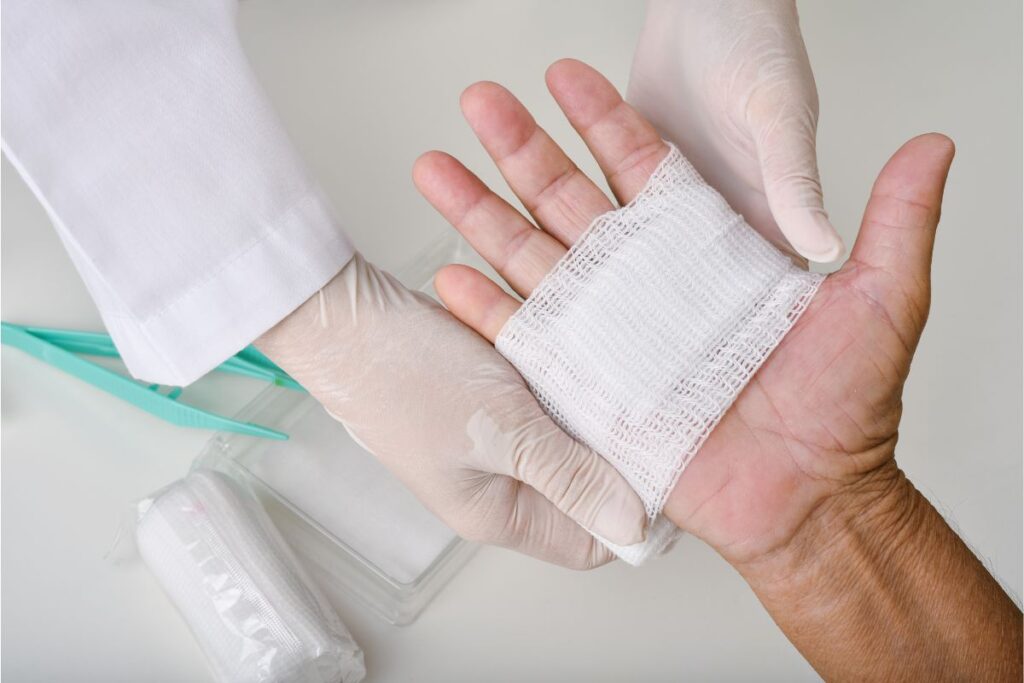Accidents occur, and occasionally they lead to injuries that require a visit to the emergency room; however, not all harm necessitates a trip to the ER. Urgent care clinics are dedicated to the treatment of the most common injuries, thus providing quick and cheap service without the waiting margin. To know which type of wound to go to the urgent care with and how or when to take care of the injury after the treatment, it is better to understand what types of wounds are usually treated here. The information in the guide runs the gamut from cuts and burns to bites and punctures, how they are treated, and when elevated care is needed.
Understanding Acute and Chronic Wounds
Briefly, wounds may be classified as either acute or chronic, depending on their period of duration to be cured. The major examples of acute wounds that are normally faced in urgent care are such things as cuts, scrapes, burns, and punctures. When treated, these wounds normally take less than two weeks to heal. Chronic wounds, however, are known to heal much more slowly, sometimes even for months, and typically need specialized care that urgent care clinics are incapable of assisting with. Chronic wounds can be diabetic wounds as well as advanced pressure sores. Being aware of the distinction enables you to know whether you can treat your injury within a short period at urgent care or whether it requires care by a specialist.
Common Types of Wounds Treated at Urgent Care
Open Skin Injuries: Abrasions
Abrasions are also known as scrapes or grazes, whereby, due to the skin rubbing against a rough surface, the superficial layer wears away. Such wounds tend to appear raw and are lightly bleeding. Although shallow abrasions may be washed and covered up at home, extensive or deep ones should be taken care of by medical practitioners to avoid the contraction of infection. In urgent care, these wounds are usually cleaned carefully by the providers, free of dirt and debris, with the use of antiseptics, and covered by a sterile dressing. They also advise on ways of maintaining the place clean during recuperation and signs of infection to look out for.
Lacerations
Lacerations are uneven openings that cut through strata of skin and other tissues in some cases. These wounds bleed more, and they are often closed so that they can heal well and have less scarring. At urgent care, the medical personnel examine the depth and length of the cut, clean the wound, and can apply numbing cream on the area and then close it. Depending on its location and the severity, it can be closed using stitches, skin glue, or adhesive strips. An adequate closure minimizes the risk of infection and aids quicker healing, particularly in hand cuts, face cuts, and joint cuts, in which refreshment of the wound leads to an increased stress on the body.
Puncture Wounds
Puncture wounds come as a result of sticking the skin with a sharp object, such as a nail or the bite of an animal. They may not be massive wounds on the outside, but they are extremely deep and run a great risk of infection due to their nature. Since bacteria become locked in the depths of the wound in the case of puncture wounds, urgent care providers meticulously clean and, at times, irrigate the wound to clean out contaminants. They also investigate whether there is some foreign material left intact and may add antibiotics in order to avoid infection. Besides, the providers assess the necessity of the tetanus booster to avoid critical complications.
Burns (Thermal and Chemical)
The burn injuries are diverse, but most of those handled in the emergency care are first- or second-degree burns. First-degree burns leave a person red, with a little bit of pain, and normally heal in a week. Second-degree burns involve blistering and deeper involvement of the skin, but they tend not to necessitate emergency care unless the burn affects large areas or an affected area is sensitive. Burns are not cooled using ice at urgent care since it causes more harm by providing sharp compresses. The sensitive area is covered with non-stick bandages, and the topical antimicrobial creams are applied by the providers to ensure the safety of the skin. They also provide recommendations on how to manage pain and what symptoms should be followed up.
Animal and Human Bites
Animal or human bites can get contaminated with bacteria that can get deep into the tissue and can be serious. Dog and cat bites have a high likelihood of becoming infected and may incur puncture wounds, together with tearing injuries. Bites on human beings have their risks due to mouth bacteria. Urgent care practitioners then clean such wounds, prescribe antibiotics as a precautionary dose, and determine whether tetanus inoculation or rabies immunization is required under the circumstances. They also give instructions on how to handle wounds to avoid any possibility of getting an infection in the process of healing.
Specialized Injuries: Nail Bed, Lip, and Ear Lacerations
The location of some wounds necessitates additional attention because of their cosmetic or functional significance. An example is nail bed injuries, which need to be repaired carefully so that one does not have deformed nails. Lip lacerations require precise realignment of the vermilion border (boundary of the lip used against the inner mouth) to be healed properly and reduce skin scarring. The complication arising from ear injuries includes auricular hematoma unless treated with a lot of care. The clinicians at the urgent care have special methods and resources available and specific to these sensitive zones so that the healing and cosmetic results can be maximized.
How Wounds Are Treated at Urgent Care
Thorough Cleaning and Irrigation
The basis of good care is cleaning the wound. The providers irrigate wounds by flushing them with a saline or clean water used to thoroughly clean the wound in a gentle manner to eliminate dirt, bacteria, and foreign material. This process minimizes any risk of infection and makes it ready to either be closed or dressed. Harsh chemicals should be avoided at all costs since the healthy tissue may be destroyed and the healing process prolonged.
Closure Techniques
There are a number of ways to close a wound depending on size, location, and depth. Passage of deeper or larger wounds is widely used to draw stitches in the edges of the skin. In lesser or minor cuts, needle punctures could be averted with skin adhesives or adhesive strips. Appropriate closure comes with faster healing and better cosmesis.
Dressings and Bandaging
Sterile bandages are provided on wounds Care in Las Vegas to keep the area clean of dirt and bacteria, although they provide a damp environment that will aid in the healing process. Depending on the wound, thin, clear adhesive films may be applied to small cuts, hydrocolloid to abrasions, or thicker foam dressings to wounds that do not secrete so much fluid. Providers also instruct them on changing dressings safely in the home and when to follow up.
When Should You Choose Emergency Care Instead?
Urgent care clinics deal with a wide variety of injuries; however, there are certain cases that still need the resources of an emergency room. An ER is required in cases of severe arterial bleeding not able to be controlled by pressure, head injuries with loss of consciousness or confusion, possibly associated with broken bones, or burns that cover large areas of the body. Being aware of these warning signs would guarantee you the utmost level of care when you need it.
Aftercare: How to Support Healing at Home
After the urgent treatment, there must be proper wound care. Maintain wound hygiene and dryness, and adhere to the directions on how the dressing should be changed, and do not pick at scabs. Further signs of an infection, which should be monitored: the spread of redness, edema, warmth, or purulent spots. It is also important to be up-to-date with tetanus vaccinations, especially after puncture wounds or bites. Furthermore, many injuries will be avoided by the use of protective equipment and well-equipped first-aid kits when conducting activities or sports.
Conclusion
The information regarding the usual categories of wounds treated in urgent care will give you the ability to act calmly but decisively in the case of injuries. Whether one has cuts and scrapes, bruises and punctures, or burns and bites, the existence of urgent care clinics offers a solution to the effective treatment of the wound that will contribute to a proper outcome, encouraging wound healing. Even when you are not sure that a wound requires professional attention, it is safer to come to the urgent care as soon as possible, as opposed to leaving the wound. It is worth it for your health and peace of mind. To schedule your appointment with the highest standard of care, visit Sahara West Urgent Care on our website, where you can also explore more informative blogs.
Faqs
What wounds are best treated at urgent care?
Wounds that are not life-threatening but require cleaning, closure, or antibiotics—like cuts, minor burns, and punctures—are ideal for urgent care.
How do I know if I need stitches?
If a cut is deep, bleeding heavily, or the edges gape open, stitches or other closure methods may be needed to ensure proper healing.
Can urgent care treat burns?
Yes, most first- and second-degree burns can be managed at urgent care unless they cover large areas or involve sensitive locations like the face or genitals.
Do I need a tetanus shot after any wound?
If your last tetanus vaccination was over five years ago or the wound is particularly dirty or deep, urgent care providers often administer a booster.
How long should I keep a wound covered?
Most wounds benefit from being covered during the initial healing phase to prevent infection. Your provider will advise when it’s safe to leave it open to air.





